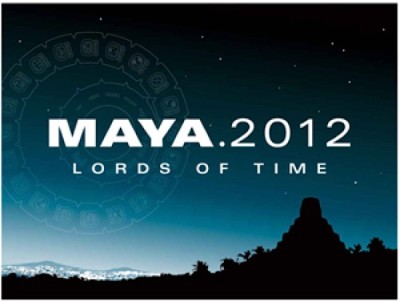Maya 2012 End of Days Prediction Explored in New Exhibition (VIDEO)
Did the Maya believe the world would end in December 2012? That is the question the University of Pennsylvania Museum of Archaeology and Anthropology (known as Penn Museum) in Philadelphia has taken to exploring in its newest exhibition opening in May.

The theory that the ancient Maya predicted a cataclysmic event at the end of their calendar has been gaining popularity over the recent years. According to the exhibition organizers, some believe that a celestial alignment will bring a series of devastating natural disasters. Others argue that this event will bring enlightenment and a new age of peace. Penn Museum scientists decided to address the issue, and attempt to answer the questions surrounding the mysterious calendar prophecy, especially having observed the public's increased curiosity about that ancient civilization and its knowledge regarding the end of time.
"MAYA 2012: Lords of Time," the exhibition, is set to compare the apocalypse predictions with their supposed origins in the ancient Maya civilization, says a statement released by Penn Museum. For that purpose, the museum mobilized some of its best curators, creating an interactive exhibition complete with sculptures and full-sized replicas of major monuments.
But most crucially, the exhibit aims to explain the Maya's complex calendar systems, which were based on an advanced understanding of astronomy and the night sky. Their most elaborate system, called the Long Count, encompasses trillions of years, and one of its important cycles comes to a close on Dec. 23, 2012 (Dec. 21, 2012, according to some scholars), according to the museum's statement.
"We wanted to tell the true story about the ancient Maya, their calendar, their understanding of time, and what all this 2012 stuff is about," Associate Curator of the American Section Simon Martin says in a video promoting the exhibit.
But the apocalyptic element is not everything, curators assure.
"MAYA 2012 offers visitors a rare opportunity to view spectacular examples of Classic Maya art – some of which have never before been seen outside Honduras – and delve into the Maya people's extraordinary, layered, and shifting concepts about time," Exhibition Curator Dr. Loa Traxler said in a statement. "MAYA 2012: Lords of Time uncovers a history and culture far richer and more surprising than commonly supposed." Traxler is an archaeologist, a leading Maya epigrapher, Mellon Associate Deputy Director of the Penn Museum, and co-author of The Ancient Maya.
Penn Museum, founded in 1887 and celebrating its 125th anniversary in 2012, is dedicated to the "study and understanding of human history and diversity." The Museum has sent more than 400 archaeological and anthropological expeditions to all the inhabited continents of the world, according to the museum website.
"MAYA 2012: Lords of Time" is presented in partnership with the Instituto Hondureño de Antropología e Historia of the Republic of Honduras. The exhibition will run through Jan. 13, 2013.



























